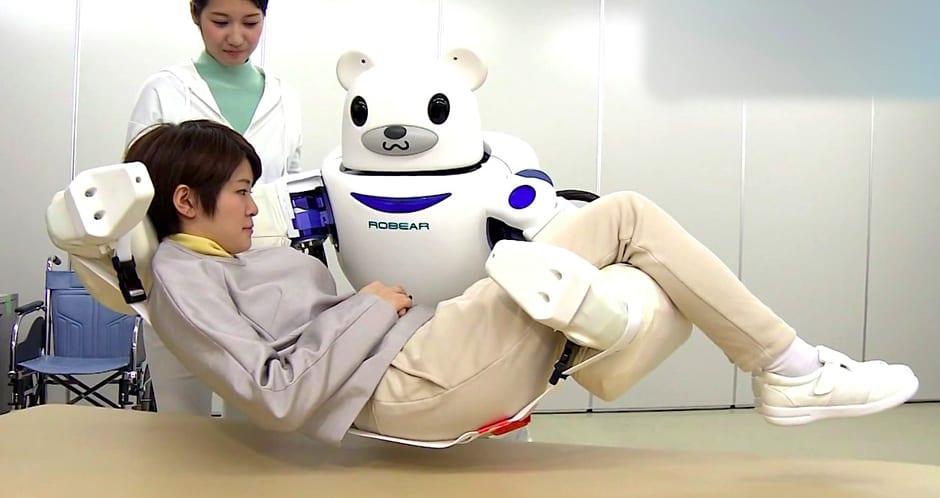
Whilst some people express fears about technology taking over the work force and about people becoming too dependent on it, in Japan, necessity has become the proverbial “mother of invention.”
Japan’s growing number of seniors compared to a significantly lower number of new citizens—either native-born or immigrants—is resulting in a society where many more people need specialised care and there are fewer people to provide it. In these demographically unbalanced circumstances, Japanese technology and robots are stepping up to change lives.
Scientists in Japan are continually pressing forward, finding meaningful ways to incorporate technology into elderly care. While some feel robots are encroaching on the workforce or diminishing the importance of human interaction, some research indicates that robots are helpful for encouraging patients with dementia to participate in both mental and physical activities.
Technologists are designing robots to look appealing. They are strong enough to aid health workers with physical work such as lifting or supporting patients. They may look like fluffy, lovable baby animals or have a more stereotypical robotic appearance. Artificial intelligence enables the robots to “learn” a variety of responses to human needs and they may interact with people by responding to physical stimuli through movement and sound.
Other technology enhances the human therapeutic experience by helping physically challenged seniors “remember the wind,” as one patient who had experienced a stroke that paralysed one side of her body put it.
There are some concerns.
Critics of therapeutic technology argue that people become more reliant on robots to do the work. But others say that imperfect robots challenge the human interaction to be more proactive by encouraging the person to “help” the robot.
Others, as mentioned above, are concerned about the workforce becoming too mechanised, reducing the number of jobs. For Japan, and perhaps for other countries, this concern is met by the fact that the senior population is growing, while the number of those able and willing to care for them is diminishing.
Did you know that Toyota is more than a car manufacturer? Their Partner Robot technology is developing human-assisting partner robot(s) to assist with human activities in applications such as assistance, elderly care, manufacturing, and mobility in the near future.
Cyberdyne develops robotic suits worn by people who need help with motor skills, such as walking or climbing stairs. The suits “sense” and respond to the electric messages that the brain sends to the muscles, helping people who have been confined to wheelchairs to walk again. Through years of work, the robotic suits have been refined to be highly sensitive as well as easier to wear and use.
Developers are working to make these technological systems affordable. By fine-tuning the systems and exploring the manufacturing processes, they are finding ways to make the technology available to the majority market.
Another concern is acceptance and usability by the people in therapy. The weight of different systems, such as the suits, has been reduced to enable people to wear them with ease. Fun and friendly designs, such as seal pups, encourage users to relax with the technology, motivating those in therapeutic care.
Of course, we want to maintain quality human contact in elderly care.
And technology is only as good as the humans who program it and use it. With wise use, robots add a new dimension to health care, aiding nurses with tasks such as lifting and moving patients, increasing joy, and encouraging motor skills in therapy and rehabilitation. It looks like twenty-first century health care can use technology as far as our imaginations will allow us to go.
Robots cannot replace the human connection, relationships or touch. But what if you were in a position when you had no visitors all day, no human interactions. Surely this is better than nothing at all?